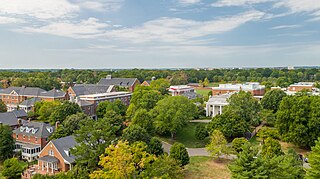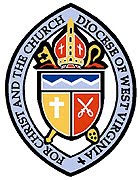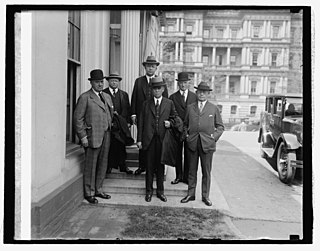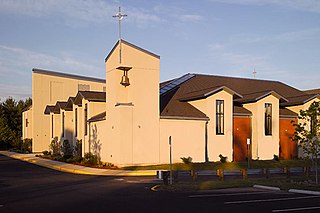Related Research Articles

Roanoke is an independent city in the U.S. state of Virginia. It is located in Southwest Virginia along the Roanoke River, in the Blue Ridge range of the greater Appalachian Mountains, approximately 50 miles (80 km) north of the Virginia–North Carolina border and 250 miles (400 km) southwest of Washington, D.C., along Interstate 81. At the 2020 census, Roanoke's population was 100,011, making it the largest city in Virginia west of the state capital Richmond. It is the principal municipality of the Roanoke metropolitan area, which had a 2020 population of 315,251.

Franklin County is located in the Blue Ridge foothills of the Commonwealth of Virginia. As of the 2020 census, the population was 54,477. Its county seat is Rocky Mount. Franklin County is part of the Roanoke Metropolitan Statistical Area and is located in the Roanoke Region of Virginia. The Roanoke River forms its northeast boundary with Bedford County.

Rocky Mount is a town in and the county seat of Franklin County, Virginia, United States. The town is part of the Roanoke Metropolitan Statistical Area, and had a population of 4,903 as of the 2020 census. It is located in the Roanoke Region of Virginia.

Episcopal High School, founded in 1839, is a boarding school located in Alexandria, Virginia. The Holy Hill 130-acre (53-hectare) campus houses 440 students from 31 states, the District of Columbia and 16 countries. The school is 100-percent boarding and is the only all-boarding school of its caliber located in a major metropolitan area.
The AA Blue Ridge District is a district in the Region III of the Virginia High School League. The district is centered around the Roanoke Valley in Southwest Virginia and is named for the Blue Ridge Mountains, which feature prominently in the region's geography.

The Episcopal Diocese of West Virginia is a diocese of the Episcopal Church in the United States of America (TEC). It encompasses all 55 counties of West Virginia. The diocese has 66 congregations, including 38 parishes, 26 missions, and 2 other churches. The diocese is headquartered in Charleston and led by The Rt. Rev. Matthew Davis Cowden who was consecrated as bishop coadjutor in March, 2022 and became bishop diocesan in October, 2022.

Chapel of the Cross is a parish of the Episcopal Church of the United States in Chapel Hill in the Diocese of North Carolina. It is the spiritual home to more than 1,600 communicants, including numerous students studying at the University of North Carolina at Chapel Hill.
Walter Russell Bowie, was a priest, author, editor, educator, hymn writer, and lecturer in the Episcopal Church.

Christ Church Glendower is the oldest of the historic Episcopal church buildings in St. Anne's Parish, Albemarle County, Virginia near Scottsville. Christ Church Glendower is located in Keene, built of brick in 1831 in the Roman Revival style. It features a full Doric order entablature with pediments at each end containing lunette windows, and is surrounded by a contributing cemetery. The remaining two historic churches in St. Anne's parish are also discussed below.
Bent Mountain is an unincorporated community in Roanoke County, Virginia, United States. Bent Mountain is located on U.S. Route 221 13.6 miles (21.9 km) southwest of Roanoke. Bent Mountain has a post office with ZIP code 24059.

Callaway is an unincorporated community in Franklin County, Virginia, United States. Callaway is 8.8 miles (14.2 km) west of Rocky Mount. Callaway has a post office with ZIP code 24067, which opened on July 14, 1871.

St. John's Episcopal Church is a historic Episcopal church in Roanoke, Virginia, United States. It was built in 1891–1892, and is a Gothic style blue-gray limestone church designed by Charles M. Burns of Philadelphia. It has a nave-plan with side aisles, a corner bell tower, a sacristy wing, and a transverse chapel and narthex to the rear. The nave features a hammerbeam roof and wooden arcading and is illuminated by stained glass windows in the clerestory and side aisle walls including several by Louis Comfort Tiffany. Attached to the church by a stone addition built in 1958, is a Tudor Revival style Parish House built in 1923.
New London is currently an unincorporated community and former town in Campbell County, Virginia, United States. The site of the colonial community is eleven miles southwest of downtown Lynchburg, Virginia. In 1754, Bedford County was formed and New London was established as the county seat. Situated near the intersection of the Great Wagon Road and the Wilderness Road, the town was an important stopping point for settlers heading west.

Rebekah Dulaney Peterkin was an American philanthropist who founded the first circle of the International Order of the King's Daughters and Sons in Virginia, and then the Sheltering Arms Hospital in Richmond.

St. James's Episcopal Church is the third oldest Episcopal congregation in Richmond, Virginia. Only the older St. John's Episcopal Church on Church Hill also remains an active congregation.
Endicott, Virginia is a small community in Franklin County, Virginia. Also known as "Long Branch, Virginia". There are only a few buildings left in the community. The elevation of Endicott is 1,158 feet. Endicott appears on the Endicott U.S. Geological Survey Map. Franklin County is in the Eastern Time Zone.
Benjamin Deyerle (1806–1883) was an architect, artist and brickmaker in Roanoke County, Virginia. Many of the historic homes, churches and public buildings in Roanoke were designed and built under his and his family's direction. He is credited with building 23 of them, and perhaps more. Some of these homes and buildings are currently listed on both the National Register of Historic Places and the Virginia Landmarks Register.

Arthur Chase Needles was the president of the Norfolk and Western Railroad. He was president of the railroad that had 20,000 employees across the nation, and guided the company successfully through the opening years of the Great Depression.

The Church of the Epiphany Episcopal is an Episcopal church within the Episcopal Diocese of Virginia in Oak Hill, Virginia, United States. The church was established in 1985 as a 'mission church' by members of Truro Episcopal Church and is listed in a book compiled in 1989 by Don Massey for the Episcopal Diocese of Virginia. The church is legally registered as Church of the Epiphany Episcopal while doing business as (DBA) Epiphany Episcopal Church, and is informally known as "The Church on the Corner."
References
- ↑ Salmon, John S. and Emily J. Salmon. 1993. Franklin County, Virginia, 1786-1986: A Bicentennial History. Franklin County Bicentennial Commission. Page 380.
- ↑ "A.C. Needles, Head of N&W., Dies after 53 Years of Service." Richmond Times-Dispatch. October 26, 1936.
- ↑ "How Things Came to Be..." St Peters-in-the-Mountain.
- ↑ Helms, Samuel King Helms. Gateway Press. 1985. The Helm Family of Virginia, Volume 2. Page 1007.
- ↑ Wingfield, Marshall. Franklin County, a History. Reprint, 2009, Genealogical Printing Company. Page 89.
- ↑ The Living Church. Volume 107. Morehouse-Gorham Company. 1943. Page 38.
- ↑ Boothe, Charles. “The Phoebe Needles Center”, Franklin News-Post. June 2, 2012.
- ↑ Dashiell, Joe. “Phoebe Needles Center celebrates 100th anniversary of landmark building.” April 29, 2017. WDBJ Channel 7.
- ↑ Wingfield, Marshall. Franklin County, a History. Reprint, 2009, Genealogical Printing Company. Page 89.
- ↑ Rucker, Janelle. “Franklin Co. supervisors attend retreat.” August 10, 2008. Roanoke Times.
- ↑ Wray, Lindsay. September 1, 2004. “Pair Promotes Puppetry to Tech FGun, Morality.” Roanoke Times.